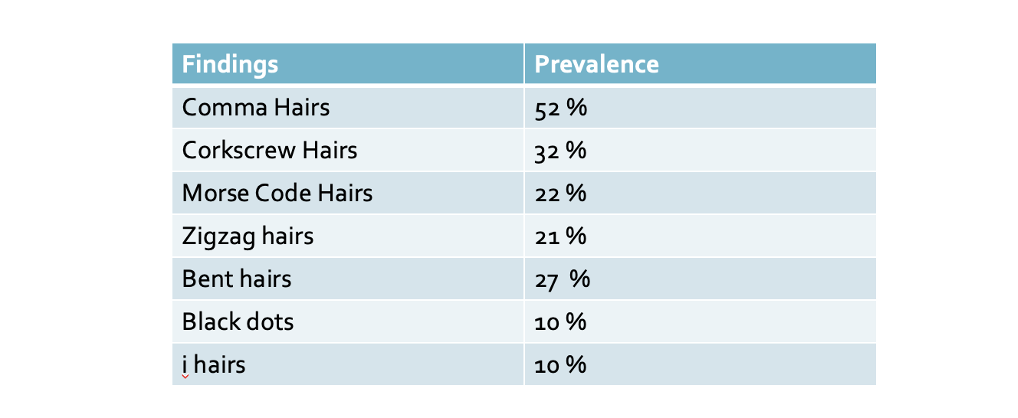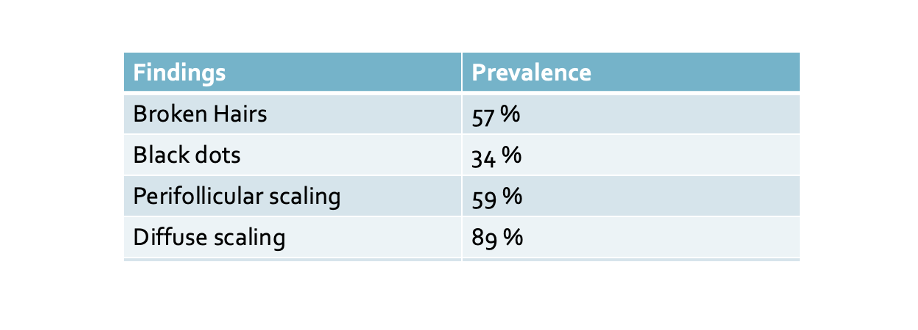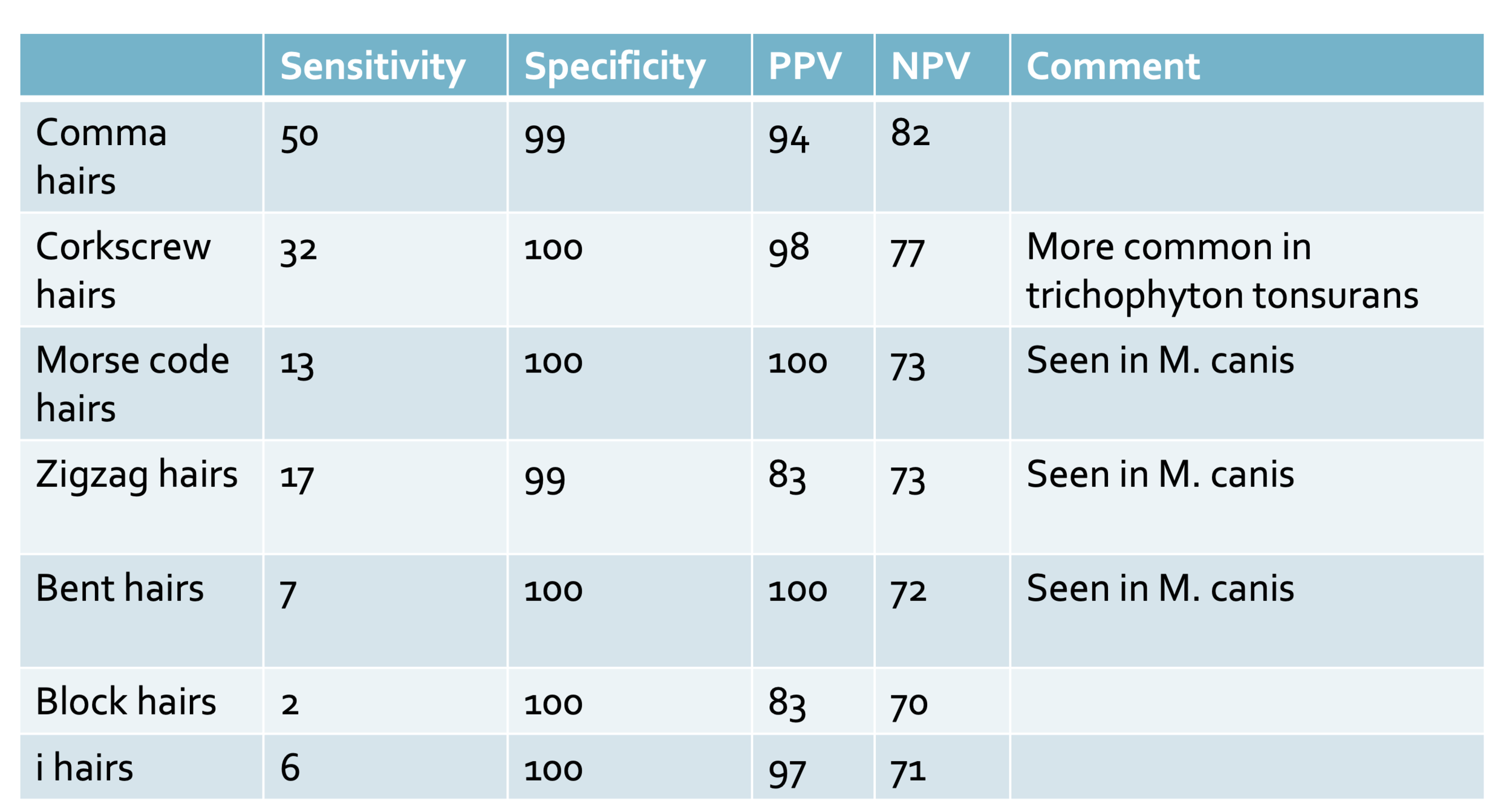The Trichoscopic Features of Tinea Capitis: New Systematic Review Puts things in Perspective
In 2020, Waskeil-Burnat and colleagues performed a very nice systematic review of all studies related to the trichoscopy of tinea capitis. This authors evaluated 37 studies consisting of 536 patients with tinea capitis. This included 16 original studies, 7 case series and 14 case reports. The authors calculated the frequency, sensitivity, specificity, and positive and negative predictive values of the typical trichoscopic findings for tinea capitis.
Frequency of the Most Characteristic Findings
The authors found that the 5 most characteristic findings of tinea capitis were comma hairs, corkscrew hairs, morse code hairs, zig zag hairs and bent hairs. Comma hairs were found in both T. tonsurans and M. canis infections but corkscrew hairs were more of a feature of T. tonsurans. Zigzag, bent and morse code hairs were found in M.canis but not T. tonsurans infections.
Common Features of Tinea Capitis that are not Specific
Several other trichoscopic features were identified by the authors that are common in tinea capitis but not particularly characteristic. These include broken hairs, black dots, perifollicular scaling and diffuse scaling.
Sensitivity, Specificity, PPV and NPV of Key tests.
The authors calculated the sensitivity, specificity, positive predictive value and negative predictive value of these trichoscopic findings.
Comment
I really liked this study. It’s a carefully done study which gives us some helpful perspective on the frequency of the various trichoscopic findings in tinea capitis and their specificity, sensitivity, and positive and negative predictive value.
REFERENCE
Waskeil-Burnat et al. Trichoscopy of Tinea Capitis: A Systematic Review. Dermatol Ther (Heidelb). 2020 Feb;10(1):43-52.
This article was written by Dr. Jeff Donovan, a Canadian and US board certified dermatologist specializing exclusively in hair loss.



